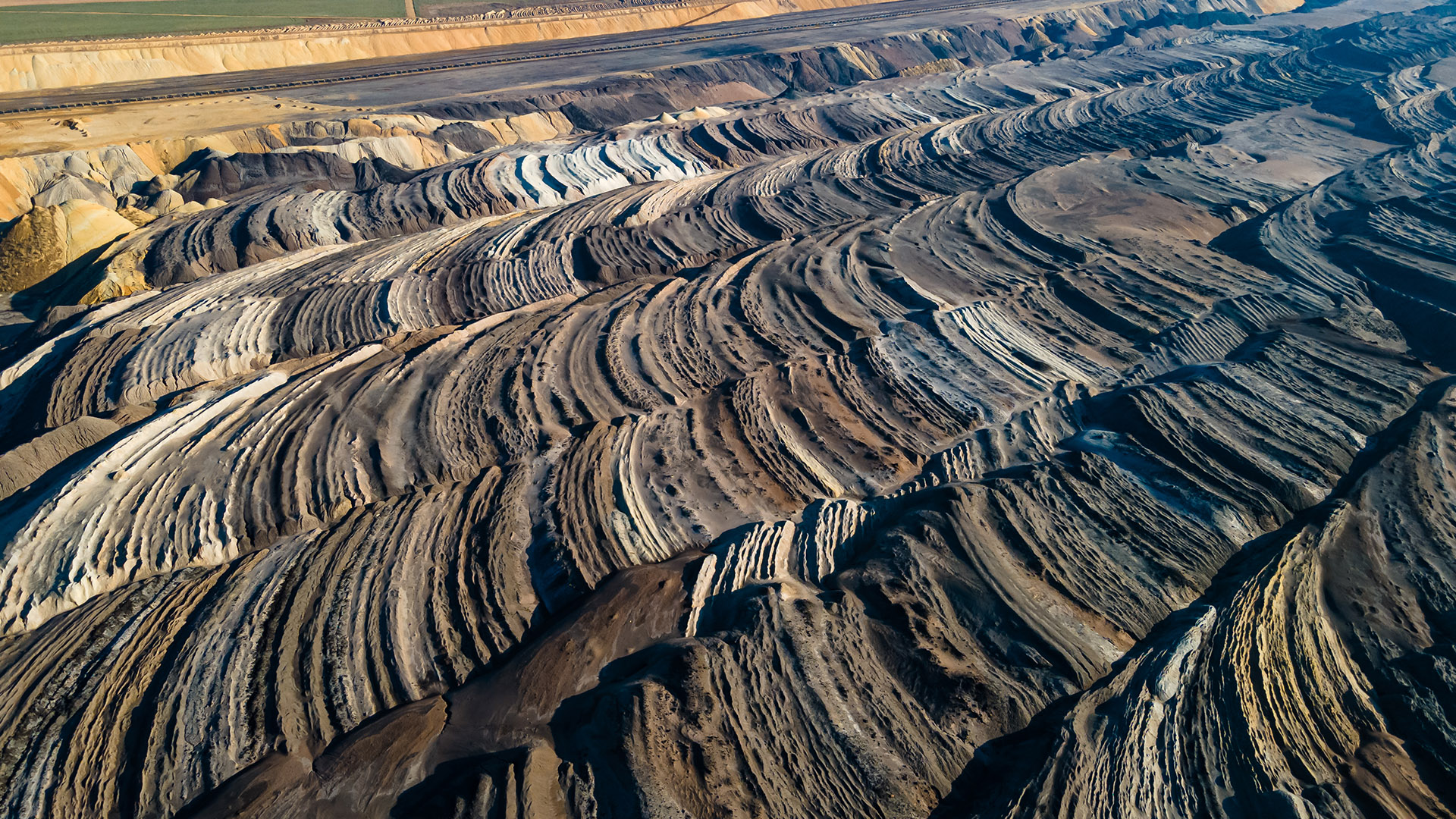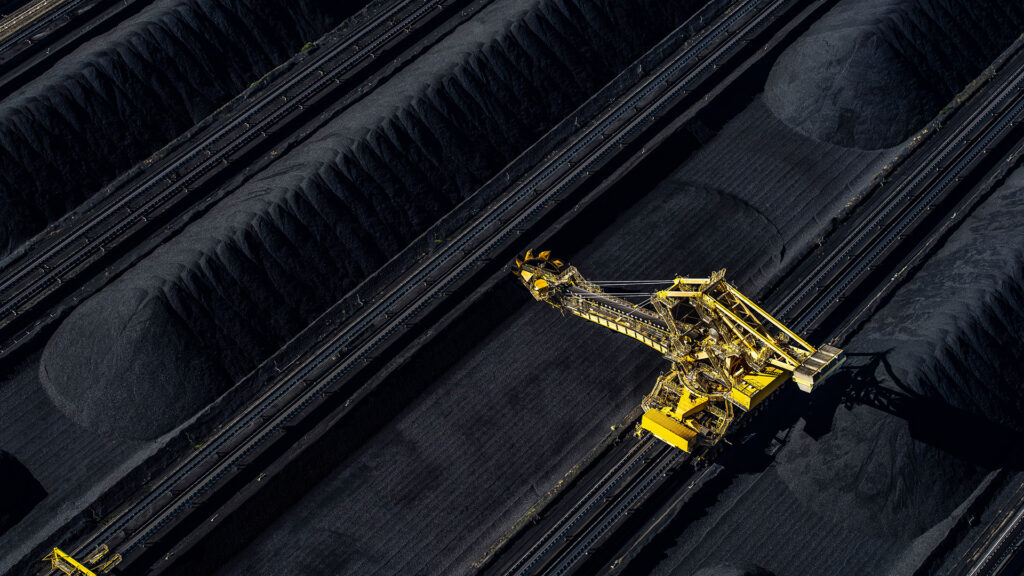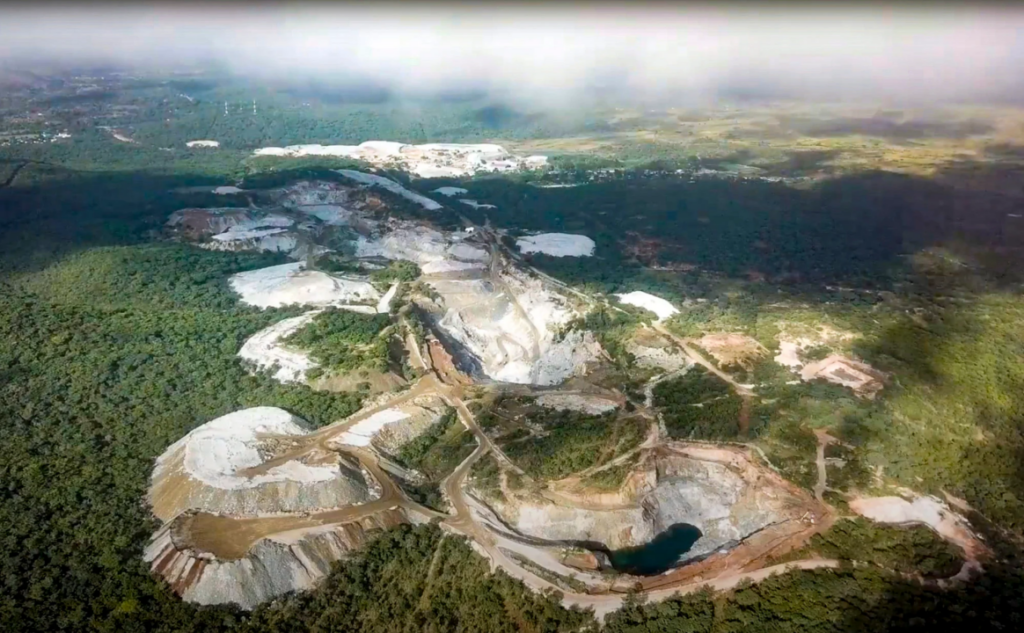|
Getting your Trinity Audio player ready...
|
In the vast and complex world of energy production, coal mines stand as monumental landmarks of industrial progress.
These colossal operations not only fuel power plants worldwide but also serve as critical components of economic stability in numerous countries. The largest coal mines in the world, spanning continents from the United States to China and Australia to Poland, are pivotal in meeting the ever-growing energy demands of our modern society.
This article delves into these massive coal reserves, exploring their production capacities, technological advancements, and the crucial roles they play in powering global economies. As we navigate the intricate balance between energy needs and environmental concerns, understanding the scale and impact of these coal giants is more important than ever. Additionally, we will cover the ten largest coal mines in the world, highlighting their locations and production levels.
Introduction to Coal Mining
Coal is a fossil fuel found in underground formations known as “coal seams” or “coal beds,” which can be remarkably extensive in both thickness and length. Throughout history, societies have relied on coal for heat and light, with early evidence of coal usage in China around 3,600 years ago.
Coal mining has been a cornerstone of industrial progress and energy production for centuries. As the world grapples with energy demands and environmental concerns, the significance of coal mines cannot be understated. Coking coal, in particular, plays a crucial role in industrial processes, especially in steel production.
The Industrial Revolution marked a pivotal point in the world’s reliance on coal, fueled by the invention and proliferation of the steam engine. This technological leap saw coal become a cornerstone of energy production, a status it maintains even in modern times. In fact, coal still accounts for approximately 35.5% of the global power mix, despite the growing emphasis on alternative and renewable energy sources.
A key factor that influences the longevity and strategic importance of coal is the sheer volume of global reserves. The United States, for instance, holds roughly one-fourth of all known coal deposits, making it a major contender in worldwide coal production and consumption.
Top Coal Mines in the World
1. North Antelope Rochelle, US (1.7 Billion Tonnes)

Located in the Powder River Basin of Wyoming, the North Antelope Rochelle mine is recognized as the largest coal mine in the world by reserves. Owned and operated by Peabody Energy, this surface mining operation boasts over 1.7 billion tonnes of recoverable coal as of December 2018.
Each year, it produces an impressive 98.4 million tonnes of thermal coal, supplying both domestic and international markets. The mine’s vast scale and efficiency underscore the significance of U.S. coal operations and the advanced mining technology employed to sustain high production levels.
2. Haerwusu, China (1.6 Billion Tonnes)

Situated in the Inner Mongolia Autonomous Region, the Haerwusu mine is China’s largest open pit coal mine. Spanning approximately 67 km² within the Zhungeer Coalfield, it is owned by the state-run Shenhua Group. With an estimated 1.6 billion tonnes of recoverable coal, the mine is integral in fueling China’s ever-growing energy demands.
The annual output of Haerwusu is estimated at around 20 million tonnes of crude coal, reinforcing China’s position as the world’s top coal consumer. The country relies heavily on domestic coal production to meet the demands of its vast industrial and residential energy usage.
3. Black Thunder Coal Mine, US (816.5 Million Tonnes)

Another significant operation in the Powder River Basin, the Black Thunder coal mine spans approximately 35,700 acres in Wyoming. Owned and operated by Arch Coal, it produced around 71.1 million tonnes of raw coal in 2018.
As one of the globe’s largest surface mines, Black Thunder exemplifies advanced mining techniques and infrastructure. With substantial recoverable coal reserves, its strategic location in a region rich in low-sulfur coal makes it particularly valuable for cleaner-burning coal production, catering to both U.S. power plants and international export markets.
4. Bełchatów Mine, Poland (1,930 Million Tonnes of Lignite Reserves)

Bełchatów Mine, located in the Łódź Province of central Poland, stands out due to its extensive lignite (brown coal) reserves, estimated at around 1,930 million tonnes. This brown coal primarily fuels the 2.26 GW Bełchatów Power Station—one of Europe’s largest coal-fired power plants. In 2015 alone, the mine produced 42.1 million tonnes of coal.
Despite its critical role in providing electricity for Poland, the Bełchatów Mine also symbolizes the challenges of transitioning to greener energy sources. Environmental scrutiny and debates regarding the long-term feasibility of lignite-based energy generation continue to shape the mine’s operational strategies.
5. PT Borneo Indobara, Indonesia (Significant Reserves)

PT Borneo Indobara operates a surface mine in South Kalimantan, Indonesia, which was reported to produce around 35.03 million tonnes of coal in 2023. Owned by Dian Swastatika Sentosa, the mine taps into the Warukin formation, extracting lignite and sub-bituminous coal.
This Indonesian mine underscores the country’s role as a key global coal exporter, serving both domestic energy demands and international clients. Projected to operate until 2036, Borneo Indobara is a testament to Indonesia’s strategic importance in meeting Asia’s expanding coal requirements.
Other Notable Coal Mines
Gevra OC Mine (Chhattisgarh, India)
Gevra Open Cast Mine ranks among Asia’s largest open-pit coal operations. Managed by South Eastern Coalfields Limited, it significantly bolsters India’s power sector. The mine’s large-scale employment opportunities and ongoing expansion reflect India’s persistent demand for coal-based energy.
Hei Dai Gou (Inner Mongolia, China)

Located in China’s Inner Mongolia region, Hei Dai Gou is an expansive open-pit mine that utilizes cutting-edge technology. As with other mines in this province, it is instrumental in supplying coal to China’s robust energy and manufacturing sectors.
Kusmunda Coal Mine (Chhattisgarh, India)

Kusmunda, operated by Coal India Limited, is another powerhouse in India’s coal industry. Its production of high-quality thermal coal provides a critical source of energy for the nation, which still relies heavily on coal to power its burgeoning industries and growing population.
Morupule Colliery, Botswana

Located in the eastern part of Botswana, Morupule Colliery is the largest coal mine in the country. Operated by Debswana, this mine plays a crucial role in supplying coal to the Morupule Power Station, the primary source of electricity for Botswana. With significant coal reserves, Morupule Colliery is pivotal in the nation’s strategy to enhance energy security and diversify its economy beyond diamond revenues.
The mine’s strategic location and infrastructure, including rail and road networks, also position it as a potential coal exporter to neighboring countries and beyond. As Botswana advances its coal mining sector, Morupule Colliery stands at the forefront of efforts to balance economic growth with environmental sustainability.
Mount Arthur Coal Mine (New South Wales, Australia)

Mount Arthur is one of the largest coal operations in Australia, providing vital resources for both domestic power plants and export markets. Its thermal coal is noted for quality, ensuring consistent demand worldwide. However, like many coal operations, it faces scrutiny related to environmental impact.
Tutupan Coal Mine (South Kalimantan, Indonesia)

Part of the Adaro Energy group, Tutupan is another leading mine contributing to Indonesia’s status as a top-tier coal exporter. It focuses on producing a stable supply of coal while adopting measures aimed at improving sustainability and environmental stewardship.
Coal Mining by Country
United States
The United States holds approximately 24% of the world’s known coal reserves, amounting to around 250.2 billion tonnes. The nation remains a substantial producer, accounting for roughly 9.3% of the global coal supply, with around 27% of its electricity generated from coal.
Major coal-producing states include Montana, Wyoming, Illinois, West Virginia, Kentucky, and Pennsylvania. While there is a broader shift toward renewable energy sources in the U.S., coal still plays a pivotal role in regional economies and contributes significantly to the overall power mix.
China
With about 13% of global coal reserves, China is the fourth-largest holder of coal deposits and the top consumer worldwide. Over 70% of its coal is located in the northern regions, particularly Shanxi and Inner Mongolia. Coal remains the backbone of China’s energy sector, powering around 70% of its electricity generation.
China’s demand for coal continues to grow, reflecting its massive industrial output and population needs. Consequently, major mines like Haerwusu and Hei Dai Gou are crucial to maintaining this energy-intensive economy.
Russia
Ranking second in global coal reserves, Russia claims around 15.2% of the world’s total. Despite its vast reserves, Russia is only the sixth largest coal consumer, using the oil equivalent of 88 million tonnes in 2018.
An interesting aspect of Russian coal is that two-thirds of its reserves consist of anthracite, often termed the ‘cleanest’ coal. The country’s production heavily leans on these higher-grade deposits, though economic and logistical factors shape the pace and scope of mining.
Botswana
Botswana, known for its rich diamond reserves, is also home to significant coal deposits. The country is gradually emerging as a notable player in the global coal mining industry, with its coal reserves estimated to be around 212 billion tonnes. These reserves are primarily located in the eastern part of the country, particularly in the Morupule, Mmamabula, and Sese coal fields.
The Morupule Colliery, operated by Debswana, is the largest coal mine in Botswana. It plays a crucial role in supplying coal to the Morupule Power Station, which is the main source of electricity for the nation. The country’s strategic location and infrastructure developments, such as rail and road networks, enhance its potential as a coal exporter to neighboring countries and beyond.
Botswana’s government is actively promoting the coal industry as part of its economic diversification efforts. The country aims to leverage its coal reserves to reduce reliance on diamond revenues and boost energy security. However, Botswana faces challenges similar to other coal-producing nations, including environmental concerns and the global shift towards cleaner energy sources.
Efforts are underway to explore cleaner coal technologies and to develop value-added coal products, such as coal-to-liquids and coal-bed methane extraction. As Botswana continues to develop its coal mining sector, it remains committed to balancing economic growth with environmental sustainability.
Biggest Coal Mines Worldwide: Production-Based Rankings
This section will rank the ten largest coal mines in the world based on production.
Measuring coal mines solely by reserve size offers insight, but actual production figures can paint a different picture. According to Global Energy Monitor’s Global Coal Mine Tracker, mines in the U.S., Indonesia, India, China, and Poland frequently top the list when ranked by annual output. This discrepancy often arises from operational capacity, technological efficiency, and market demand.
Environmental and Economic Considerations
Coal continues to fuel industries across the globe but also draws increasing attention regarding environmental consequences. Greenhouse gas emissions from coal-fired power plants contribute to climate change, and the environmental footprint of surface mining has led to habitat destruction and water pollution concerns.
Economically, coal mining supports local communities through job creation and associated industries. Nations with abundant reserves leverage this resource for export revenues and to sustain their own energy security. Balancing these economic benefits with the urgent need to reduce carbon emissions is a complex challenge facing governments, businesses, and local populations alike.
Conclusion
In the current global energy landscape, coal remains a formidable force. The mines profiled in this blog—both by reserve size and actual production—underscore the magnitude of coal’s role, particularly in countries such as the United States, China, Indonesia, and Poland. As long as coal maintains its position as a primary energy source, these mines will remain influential in shaping global supply and energy policy.
However, any transition away from coal faces significant hurdles, including economic impacts on mining communities, limited political support in some regions, and the upfront investments needed for alternative energy infrastructure. Continued technological advancements and stricter environmental standards aim to mitigate coal’s ecological footprint and guide the world toward a more balanced, sustainable energy future.
Frequently Asked Questions (FAQ)
Where is the largest coal mine in the world?
The largest coal mine in the world by reserves is the North Antelope Rochelle Coal Mine located in the Powder River Basin of Wyoming, USA. It boasts over 1.7 billion tonnes of recoverable coal.
What are the top 5 largest coal mines in the US?
The top 5 largest coal mines in the US include:
North Antelope Rochelle Coal Mine, Wyoming
Black Thunder Coal Mine, Wyoming
Antelope Coal Mine, Wyoming
Eagle Butte Coal Mine, Wyoming
Cordero Rojo Mine, Wyoming
Which country is no 1 in coal?
China is the number one country in coal consumption and production, with extensive coal reserves and a significant portion of its electricity generated from coal.
Where is the highest quality coal in the world?
The highest quality coal, known as anthracite, is found in abundance in Russia. Anthracite is often referred to as the ‘cleanest’ coal due to its high carbon content and low impurities.
How does coal mining impact the environment?
Coal mining impacts the environment through habitat destruction, water pollution, and greenhouse gas emissions from coal-fired power plants. Efforts are ongoing to reduce these impacts through cleaner coal technologies and stricter environmental regulations.
What is the future of coal mining?
The future of coal mining is shaped by the global shift towards cleaner energy sources. While coal remains a primary energy source, increasing environmental awareness and technological advancements aim to reduce its ecological footprint and guide a transition to sustainable energy solutions.







